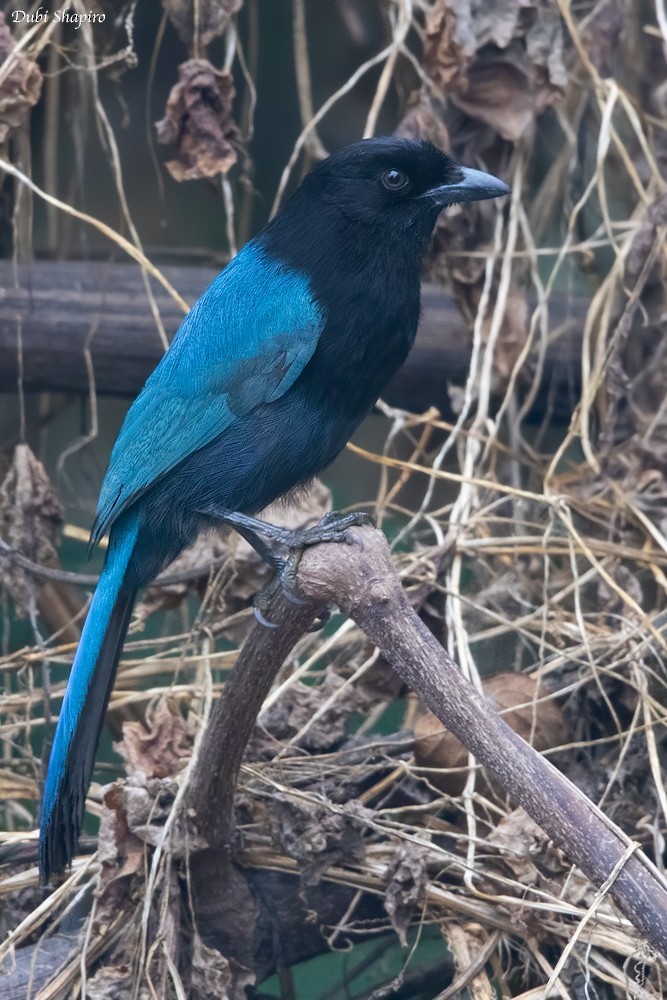Bushy-crested Jay
A species of Typical Neotropical Jays Scientific name : Cyanocorax melanocyaneus Genus : Typical Neotropical Jays
Bushy-crested Jay, A species of Typical Neotropical Jays
Botanical name: Cyanocorax melanocyaneus
Genus: Typical Neotropical Jays
Content
Description General Info
 Photo By Dubi Shapiro
Photo By Dubi Shapiro Description
The adult bushy-crested jay has a length of 28 to 30 cm (11 to 12 in). The tail is long and the central feathers are graduated. The sexes look alike; the head, neck, breast and upper mantle are black while the remaining upper parts are dark blue with a sheen of green or violet. The underparts are plain greenish-blue, the undersides of the wings are grey and the underside of the tail is blackish. The head bears a stubble-like erectile crown of feathers, the beak is black and relatively small, the irises are yellow and the legs black. 
Size
33 cm
Nest Placement
Tree
Feeding Habits
Bushy-crested Jay consume a varied diet of insects, seeds, and fruits. They forage in trees and on the ground, utilizing their strong beaks to access food and exhibit no unique dietary adaptations or strong preferences.
Habitat
Bushy-crested Jay thrive in diverse environments, primarily settling within arid to semihumid woodlands, including forest peripheries and shrubland. They are adaptive, occupying altered terrains such as secondary growth woodlands and plantations. High maturity forests are less commonly inhabited by bushy-crested Jay, except in instances where the woodland is interspersed with clearings.
Dite type
Omnivorous
General Info
Feeding Habits
Bird food type
Distribution Area
This jay is native to Central America where it is found in Guatemala, El Salvador, Honduras and Nicaragua at altitudes between about 600 and 2,450 m (2,000 and 8,000 ft). Its habitat is humid forests, especially those with pine and oak, forest verges, glades and areas of scrub. It adapts well to degradation of its habitat and has become common in coffee plantations and around agricultural land. 
Species Status
Cyanocorax melanocyaneus seems to be adaptable and is coping with the degradation of its natural environment by moving to manmade habitats such as coffee plantations and cropland. It has a wide range and the population is thought to be increasing, so the International Union for Conservation of Nature has rated it as a species of least concern. 

 Photo By Dubi Shapiro
Photo By Dubi Shapiro Scientific Classification
Phylum
Chordates Class
Birds Order
Perching birds Family
Crows and jays Genus
Typical Neotropical Jays Species
Bushy-crested Jay